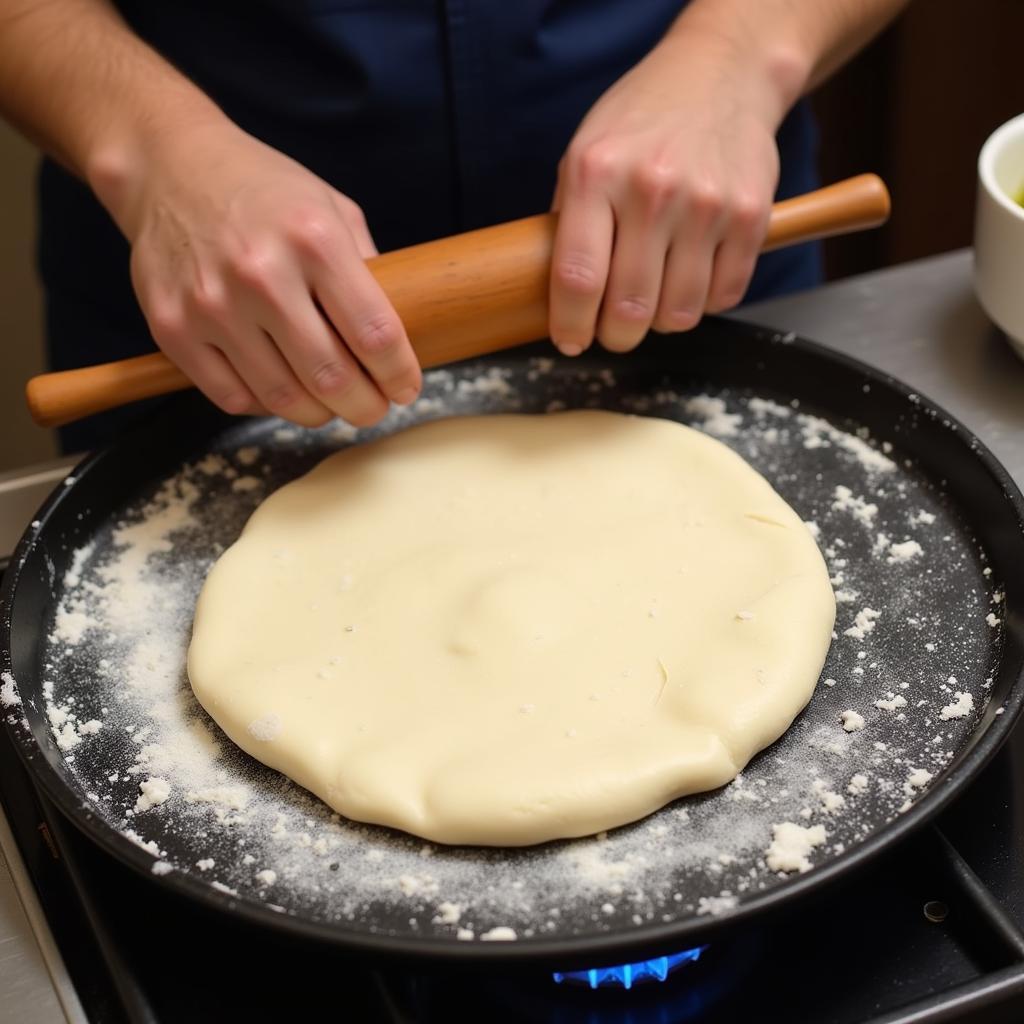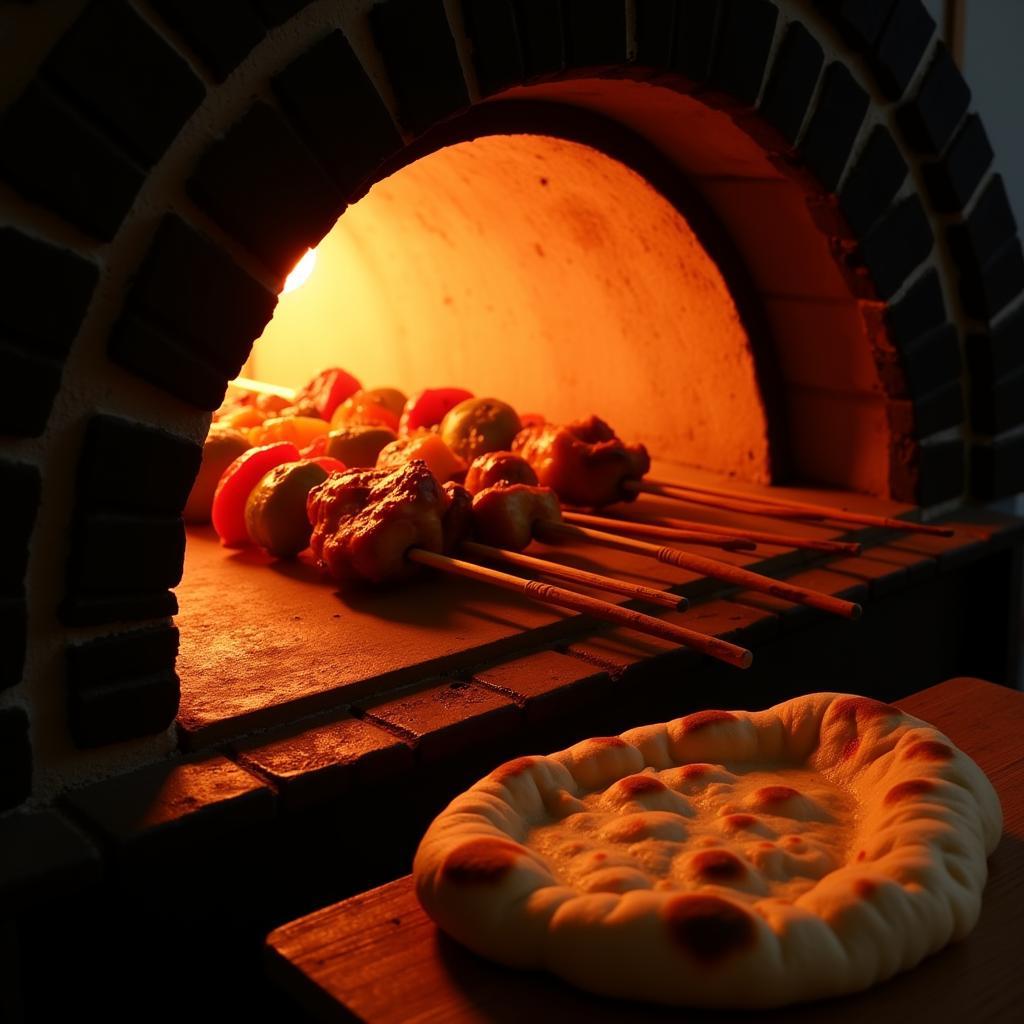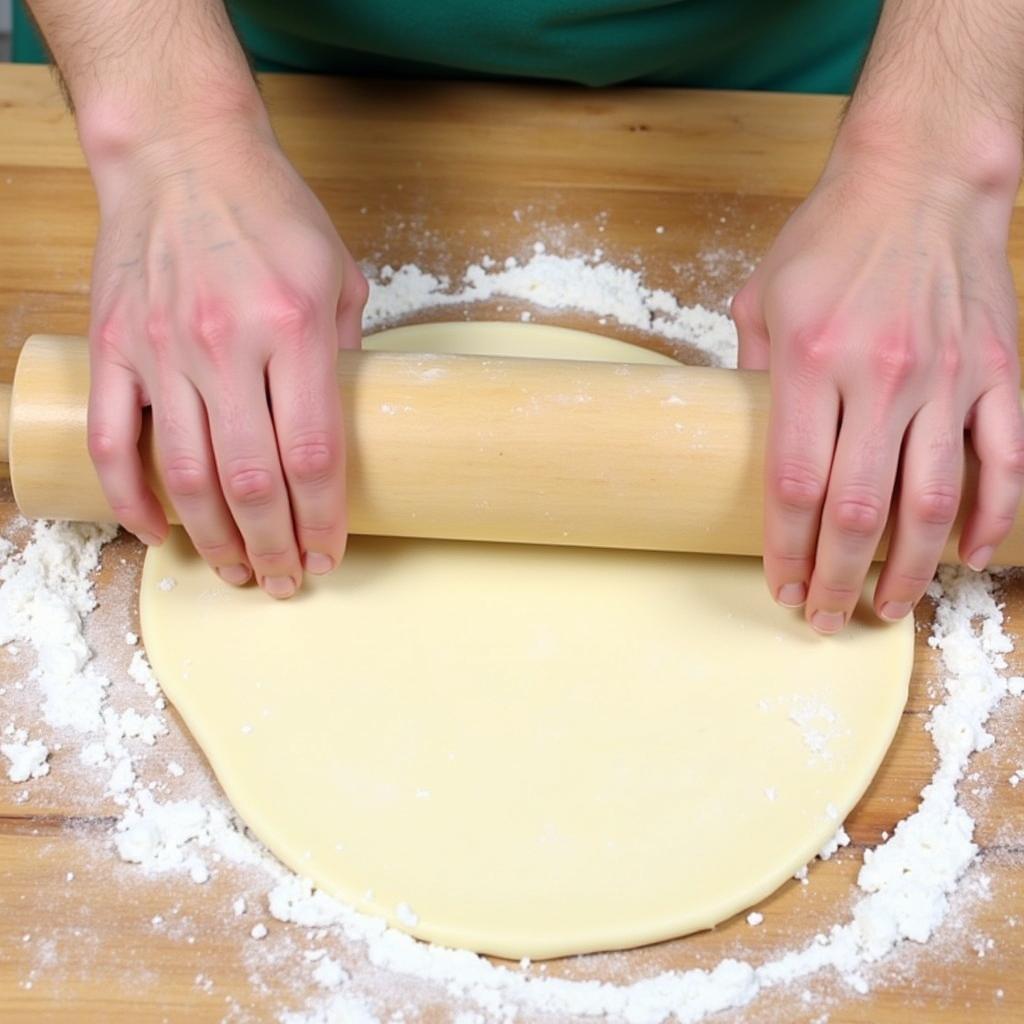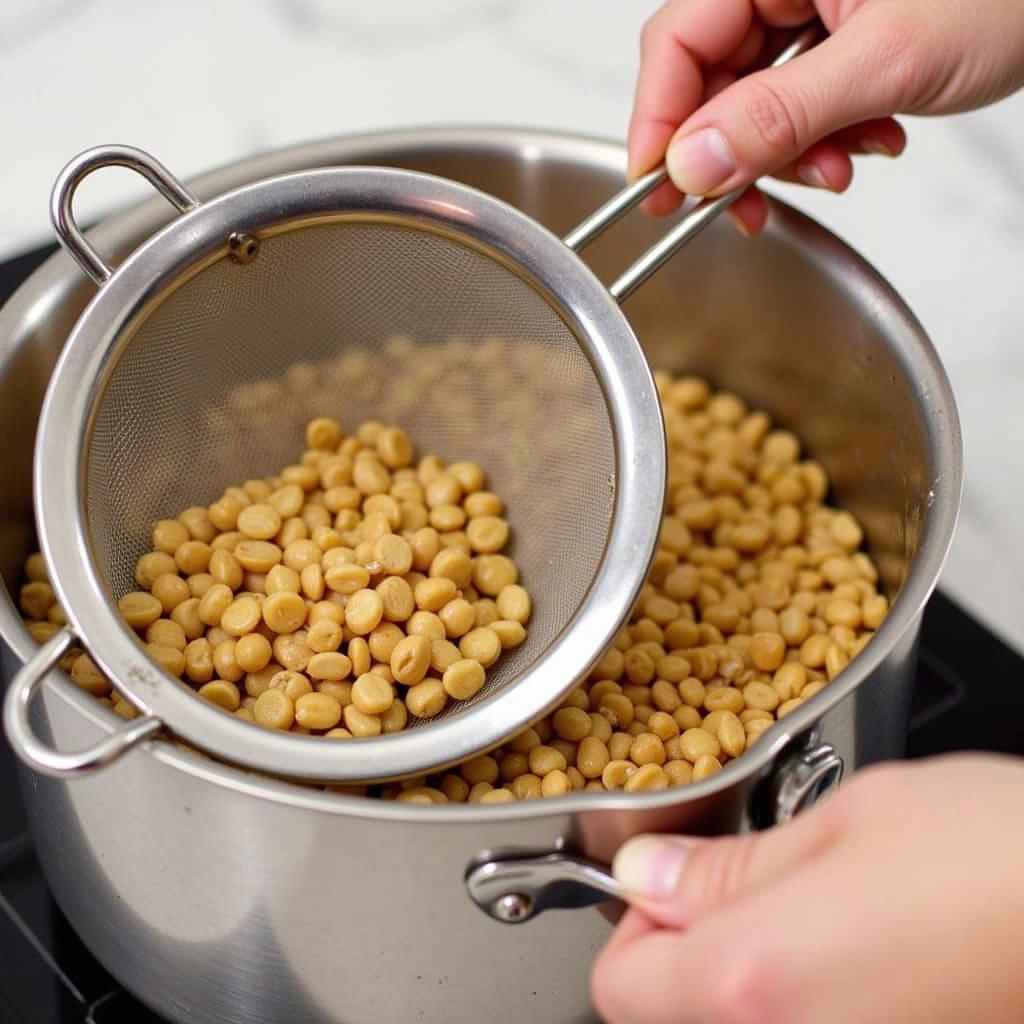India. A land of vibrant spices, fragrant aromas, and diverse culinary traditions. If you’re someone who loves to recreate the magic of Indian cuisine in your own kitchen, you know that having the right cookware is essential. From simmering aromatic curries to preparing fluffy naan, the right tools can elevate your Indian cooking experience to a whole new level. In this comprehensive guide, we’ll delve into the world of Indian Food Cookware, exploring the must-have pots, pans, and utensils that will empower you to create authentic and mouthwatering Indian dishes.
The Cornerstones of Indian Cooking: Essential Pots and Pans
The Sturdy Kadai: Your Curry Companion
 A traditional Indian kadai, used for cooking curries and stir-fries.
A traditional Indian kadai, used for cooking curries and stir-fries.
No Indian kitchen is complete without a kadai, also known as a karahi. This deep, round pan with sloped sides is a workhorse in Indian cooking, used for everything from deep-frying samosas and pakoras to simmering flavorful curries and stir-frying vegetables. Choosing the right material for your kadai is crucial. Traditionally made from cast iron or brass, modern variations include stainless steel and non-stick options.
The Versatile Tava: From Rotis to Dosas
 A flat tava, used for cooking rotis, parathas, and dosas.
A flat tava, used for cooking rotis, parathas, and dosas.
A tava is a flat, round or square griddle essential for making a variety of Indian breads. From thin and crispy rotis to fluffy bhaturas and crispy dosas, the tava provides even heat distribution, essential for achieving that perfect golden-brown finish. While traditionally made from clay or iron, modern tavass are available in non-stick and cast iron options.
The Mighty Pressure Cooker: For Quick and Flavorful Meals
 A pressure cooker, used for cooking lentils, beans, and rice.
A pressure cooker, used for cooking lentils, beans, and rice.
In the realm of Indian cooking, where lentils, beans, and rice reign supreme, the pressure cooker is an indispensable tool. This ingenious invention significantly reduces cooking time while preserving the flavors and nutrients of your ingredients. From creamy dal makhani to fragrant biryani, the pressure cooker is your secret weapon for creating delicious and wholesome Indian meals in a flash.
Beyond the Basics: Exploring Specialized Indian Cookware
The Handi: Slow-Cooking for Enhanced Flavors
 A clay handi, used for slow-cooking dishes like biryani.
A clay handi, used for slow-cooking dishes like biryani.
For dishes that benefit from slow-cooking and gentle simmering, the handi is an excellent choice. Traditionally made from clay, handis are known for their ability to retain heat evenly, allowing flavors to meld and deepen over time. Biryanis, stews, and even some desserts benefit from the unique cooking properties of a handi.
The Tandoor: Recreating the Flavors of India at Home
 A traditional tandoor oven, used for cooking naan, kebabs, and tandoori chicken.
A traditional tandoor oven, used for cooking naan, kebabs, and tandoori chicken.
No exploration of Indian cookware would be complete without mentioning the tandoor. This cylindrical clay oven is renowned for its ability to impart a smoky flavor and unique char to dishes like naan, tandoori chicken, and kebabs. While traditionally used in restaurants and homes in India, countertop tandoor ovens have made it possible to recreate these iconic dishes in your own backyard.
Essential Utensils for Authentic Indian Cooking
The Rolling Pin (Chakla Belan): Shaping Perfect Rotis and Parathas
 A wooden rolling pin, used for making rotis, parathas, and other Indian breads.
A wooden rolling pin, used for making rotis, parathas, and other Indian breads.
A sturdy rolling pin, known as a chakla belan in Hindi, is a must-have for anyone who wants to master the art of making Indian breads. The chakla, a round wooden board, provides a stable surface for rolling, while the belan, a cylindrical rolling pin, ensures even pressure and thickness.
The Strainer (Chhanni): For Fine-Textured Sauces and Smooth Dal
 A fine-mesh strainer, used for straining sauces, lentils, and rice.
A fine-mesh strainer, used for straining sauces, lentils, and rice.
From straining lentils for smooth dal to removing spices from fragrant curries, a fine-mesh strainer is an indispensable tool in the Indian kitchen. It allows you to achieve the desired texture and consistency in your dishes while removing any unwanted bits and pieces.
Mortar and Pestle (Sil Batta): Releasing the Flavors of Spices
 A mortar and pestle, used for grinding spices.
A mortar and pestle, used for grinding spices.
For those who want to experience the true essence of Indian cooking, grinding your own spices is essential. A mortar and pestle allow you to release the full potential of aromatic spices like cumin, coriander, and cardamom, adding depth and complexity to your dishes.
Choosing the Right Cookware: Factors to Consider
Material Matters: From Traditional to Modern
- Cast iron: Known for its exceptional heat retention and durability, cast iron is a traditional choice for kadai, tava, and pressure cookers. It requires seasoning to prevent rusting.
- Stainless steel: Durable, easy to clean, and resistant to rust, stainless steel is a popular choice for modern Indian kitchens.
- Non-stick: Ideal for beginners and those who prioritize easy cleaning, non-stick cookware offers convenience but may not be suitable for high-heat cooking.
- Clay: Traditional and known for its heat retention and ability to enhance flavors, clay cookware like handis requires careful handling and cleaning.
Size and Capacity: Matching Your Cooking Needs
Consider the size of your family and your cooking habits when choosing the size and capacity of your cookware. A larger kadai is ideal for families or those who entertain frequently, while a smaller tava might be sufficient for individuals or couples.
Heat Source Compatibility: Gas, Electric, or Induction
Ensure that the cookware you choose is compatible with your stovetop. While most Indian cookware is suitable for gas stoves, some materials, like cast iron, may require special care on glass-top stoves. If you have an induction cooktop, make sure to choose cookware that is induction compatible.
Conclusion
Equipping your kitchen with the right Indian food cookware can transform your culinary journey, allowing you to explore the vibrant and flavorful world of Indian cuisine with confidence and ease. From the essential kadai and tava to the specialized handi and tandoor, each piece of cookware plays a crucial role in creating authentic and delicious Indian dishes. Remember to choose materials and sizes that suit your needs and cooking style, and don’t hesitate to experiment with different tools to discover your favorites.
For any questions or for assistance in choosing the perfect Indian cookware for your needs, please contact us at Phone Number: 02437655121, Email: [email protected]. Or visit our store: 3PGH+8R9, ĐT70A, thôn Trung, Bắc Từ Liêm, Hà Nội, Việt Nam. Our customer service team is available 24/7 to help you.